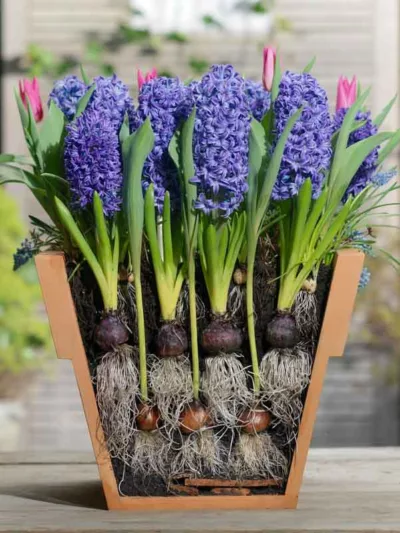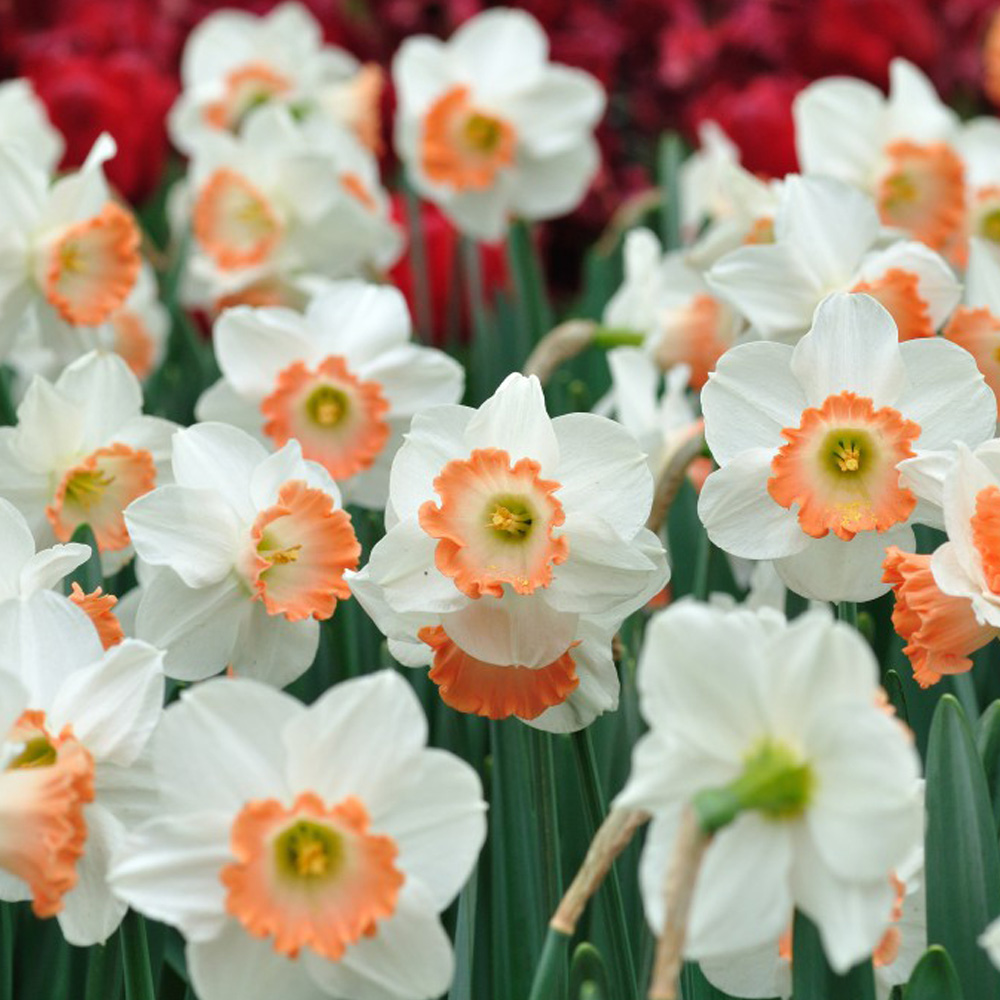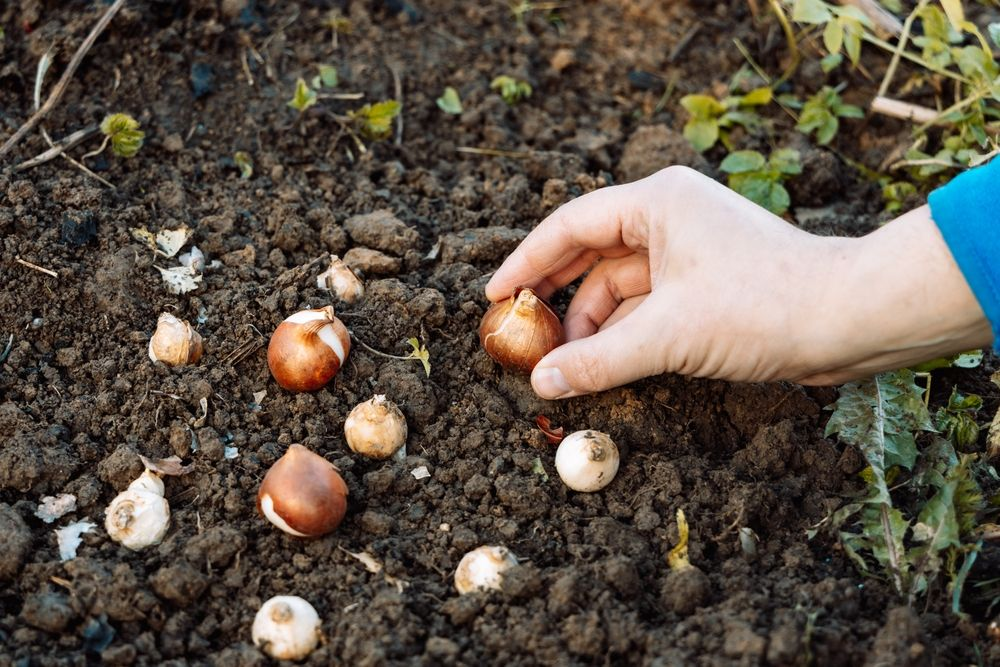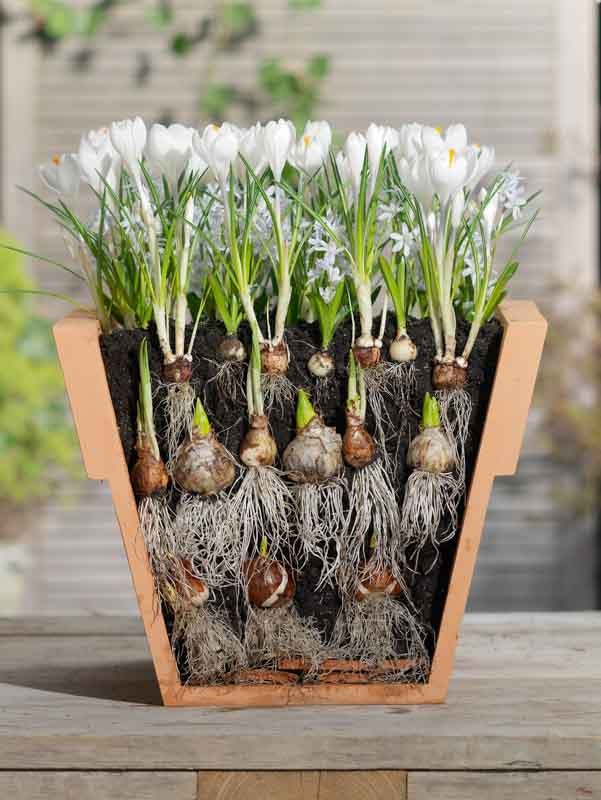Spring-flowering bulbs are among the first signs of life after a cold winter, providing essential nectar for early bees and filling gardens with joy. Who hasn’t felt uplifted by the sight of snowdrops pushing through the frost or daffodils swaying in the breeze? But you can take this beauty to the next level by using a clever planting method known as “lasagna planting.”
What is Lasagna Planting?
Lasagna planting involves layering different types of bulbs in a single planting area—whether in a garden bed, border, or container. This technique maximizes both space and the length of your blooming season by arranging bulbs in layers according to their planting depths. By stacking them one on top of the other, you can enjoy a long-lasting, colorful display without needing extra space.

How Does Lasagna Planting Work?
This method is perfect for small spaces like garden borders or containers. For example, in containers, lasagna planting can create stunning displays right at your doorstep, adding color and fragrance that will brighten anyone’s day. Here’s how it works:
- Deepest Bulbs First: Start by planting the largest bulbs, which require the deepest planting depth, at the bottom of your pot or garden bed.
- Layering: Add a layer of soil or potting mix, and then plant medium-sized bulbs on top. Add another layer of growing medium, and finish by planting the smallest bulbs at the top, which require the shallowest planting depth.
- Successive Blooms: Depending on your bulb choices, you can enjoy a steady progression of blooms or a vibrant burst of colors all at once. Some gardeners use up to five layers for a more extended, spectacular floral show.
When to Plant and How to Prepare
Plant spring bulbs in the fall before the first frost to ensure they have enough time to prepare for winter. If you miss the fall window, don’t worry—daffodils, for example, can still be planted as late as January for a late but beautiful display. The cold weather triggers the bulbs’ growth process, ensuring a strong spring performance.
For planting in garden borders, enrich the soil with compost or well-rotted manure to provide essential nutrients. For containers, ensure they have good drainage by using a high-quality potting mix. Skip the traditional layer of stones or gravel at the bottom—it’s unnecessary if you’re using the right potting soil. Simply layer your bulbs, add soil, and repeat.

Planting Depths and Tips
As a general rule, bulbs should be planted at a depth that is two to three times their height. For example, a 7cm (3-inch) tulip bulb should sit about 18-20cm (7-8 inches) deep in the soil. Always check the specific planting instructions on your bulb packages for best results.
While waiting for your bulbs to emerge, consider brightening up the pots with hardy winter annuals like pansies. These won’t interfere with your bulbs but will add instant color until your bulbs start to show their green shoots.

Plan for a Colorful Succession of Blooms
Lasagna planting ensures that your garden will bloom in stages, starting with early flowers like snowdrops, crocuses, and winter aconites, followed by the bulk of spring flowers such as daffodils and hyacinths. The grand finale will be late bloomers like tulips and ornamental alliums, ensuring a colorful show from early spring through to late spring.
Additionally, this floral feast is a vital resource for early-pollinating bees, giving them the nectar they need to kickstart their year and helping ensure the success of your garden throughout the season.
Have you tried lasagna planting this fall? Share your experience and what you’ve planted to help spread the joy of spring blooms even further!
